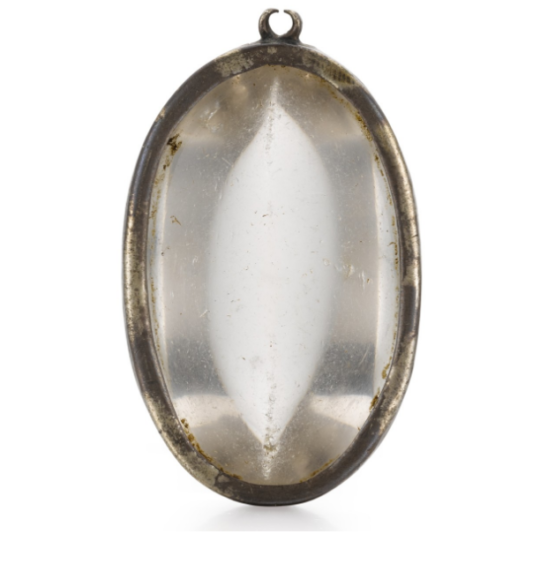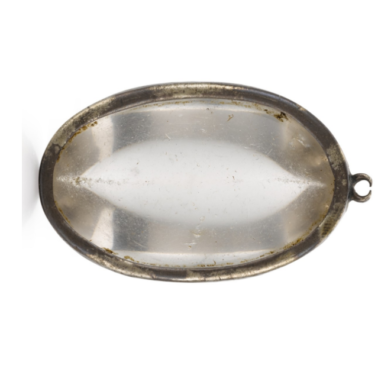I’m dipping into my lockdown reserves to show you an item which dramatically gazumped its estimate – selling for 100 times its pre-sale hopes.
Mind you, its unusual nature would have been a devil to identify or date, so no blame can be attached to the auctioneer’s guestimate.
Probably Scottish, possibly Seventh or Eighth Century, and maybe remounted in the 17th Century or thereabouts, the so-called ‘Charmstone Pendant’ comprised a large rock crystal in a silver mount.
Scottish charmstones are typically large, smooth, rounded pieces of rock crystal or other forms of quartz. They were credited with healing or having quasi-magical powers.
This example follows the same form as the famous Glenorchy Charmstone in the National Museums of Scotland in Edinburgh. Like the Glenorchy stone, it may once have adorned an early reliquary.

The Glenorchy Charmstone is thought to date to the Seventh or Eighth Centuries and functioned as an amuletic talisman for the Campbells of Glenorchy in Argyll.
It was believed to counteract witchcraft and to cure sickness and was worn by Sir Colin Campbell in the 15th Century, when he fought the Turks at Rhodes.
The auctioned pendant may well be later in date, but probably also came from a reliquary, given its shape. It is a tantalising theory that it, too, was once used as a charmstone in the distant past.
Just 2⅜ by 1⅜ inches, the pendant came from a house sale where it appeared in a 1949 inventory as, ‘PENDANT, oval rock crystal, silver mounted, in the Strong Room.’
Stumped as to nailing down its age and importance, Sotheby’s offered it at a cautious £150-£200. It sold for £17,500.
Picture: Rock crystal pendant, £17,500 (Sotheby’s).











